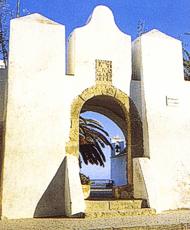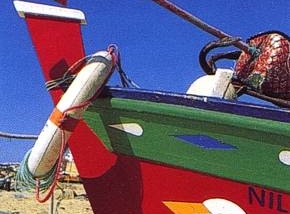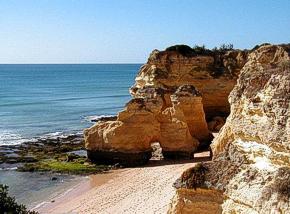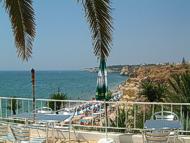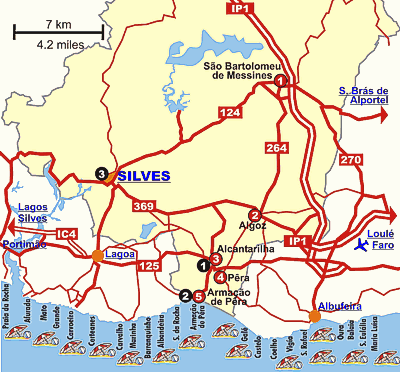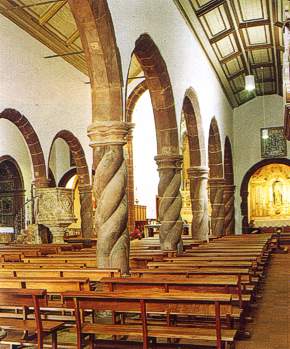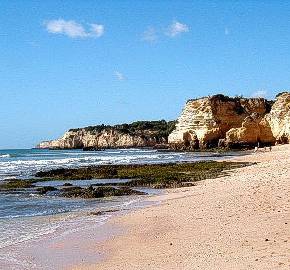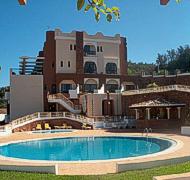|
 Algoz
Algoz
Verdant orange, fig and almond trees surround this village which still
retains a few old houses with prettily decorated chimneys and modest
whitewashed hermitages.
Main church - Displaying the architectural simplicity
of the 18th century on the outside,. this church has within it a number
of art treasures, ranging from the 17th century tiles that cover the
walls and ceiling of the baptistery and some of the walls to great
artistic effect and the gilded, caned retable in the rocaille style
that adorns the Capela do Santissimo (Chapel of the Most Holy).
Granary of Monte da Piedade (Mount of Piety) - This
building belonged to the old mutual association which would support
its member, with help in the form of loans. The entrance was possibly
built using stone work from the 16th century In addition to a plaque
bearing the date 1704, the facade has a decorative circular window
and a cross made with patterned polychrome tiles (18th century).
Hermitage of Nossa Senhora do Pilar (Our lady of the Pillar)
- Sited on top of a hill, this country chapel is a good place
from which to view the surrounding landscape.
 Alcantarilha Alcantarilha
With its whitewashed walls, Alcantarilha's church dominates a village
of modest houses scattered prettily across the hillside.
Main church - All that remains of the original 16th
century Structure is the Manueline main chapel, to which an
18th century carved and gilded retable has since been added. The baptismal
chapel has a tiled ashlar (17th century) and in the sacristy, is a
fine chest above ,which there is a niche decorated with acanthus leaves
(18th century). Adjoining the church is a grisly Capela dos Ossos
(Chapel of Bones). its walls and ceiling clad with approximately 1.500
skulls.
Misericordia (Mercy) church - Unremarkable from the
outside. Inside this church the statue and carved, added retable on
the altar are worth seeing.
 Pêra Pêra
In the streets around Pêra's church many of the houses are typically
Algarve in appearance.
Main church - The carved and gilded woodwork of the
retables in the main chapel, the side chapels and the
chapels of Nossa Senhora do Rosário (Our Lady of the Rosary)
and Sagrado Coração de Jesus (the Sacred Heart) are
representative of art in the Algarve a at the time (18th century).
The church's holy treasures include vestments and a finely crafted
silver Monstrance. The churchyard affords excellent views of the surrounding
fields and the sea.
|

